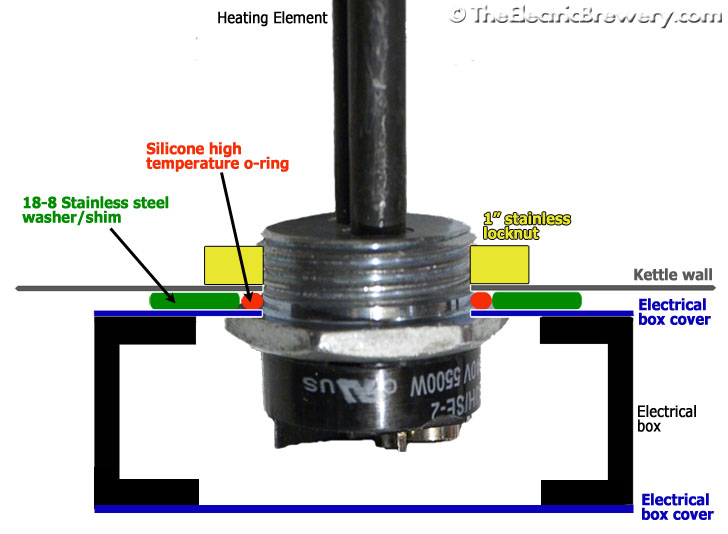wuttheheeck
Well-Known Member
- Joined
- Aug 7, 2013
- Messages
- 62
- Reaction score
- 0
Hello all. I have a 120v element inside a stainless pot for a seperate 4 vessel heat exchanger.
I have noticed that I have a current leak after finger testing water temp.
I am using the gangbox method similar to Kal as the junction of my leads. The water does heat up which make me concerned why i felt a shock, I was under the impression that electricity would bypass the element taking the shortest route.
This leads me to my next concern; the ground.
I have grounded the inside of the gangbox and by contact the ground should connect to the SS pot. I am considering extending the cord all the way into the handle for an insured ground.
My question for you is, how do I find said electrical leak. Everything looks wired fine to me, all my coverings are water tight ect.
Cheers
I have noticed that I have a current leak after finger testing water temp.
I am using the gangbox method similar to Kal as the junction of my leads. The water does heat up which make me concerned why i felt a shock, I was under the impression that electricity would bypass the element taking the shortest route.
This leads me to my next concern; the ground.
I have grounded the inside of the gangbox and by contact the ground should connect to the SS pot. I am considering extending the cord all the way into the handle for an insured ground.
My question for you is, how do I find said electrical leak. Everything looks wired fine to me, all my coverings are water tight ect.
Cheers




